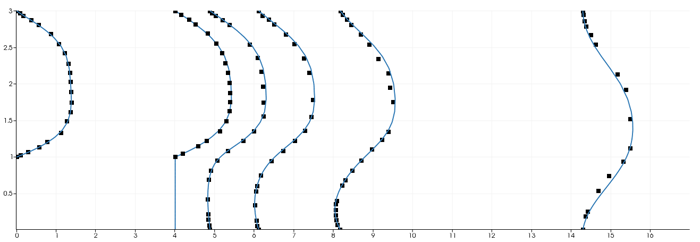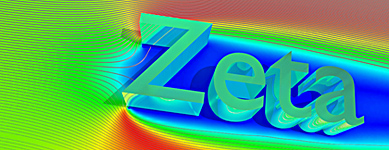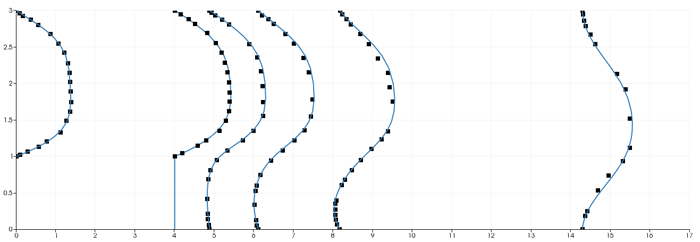Benchmark: Backward Facing Step (2d)
This is another commonly used benchmark, which involves flow past a backward facing step. The step height (H) is used to specify the domain. The inlet is located upstream at a distance of 4H and has a height of 2H. The domain extends downstream from the step for 36H, producing an overall domain length of 40H. The average inlet Reynolds number is 229 (using the step height). A experimental based parabolic profile is applied to the inlet and pressure is imposed at the exit. No slip walls cover the rest of the boundary domain.
The results for a simple non-uniform structured mesh are presented below. The results are compared to data from Denham and Patrik, Transactions of the Institution of Chemical Engineers(1974)52:361-367. The horizontal velocity is plotted at y=0.00, 4.00, 4.88, 6.11, 8.17 and 14.29, with the square datapoints from Denham (1974). Vertical and horizontal contour plots are also provided, along with streamtracer results using ParaView post-processing.
The Input zip file contains only the files necessary to run the specified program, the All zip file also contains the output and values extracted from the Denham paper.
Reynolds number = 229
CBSFlow(2d) Semi-Implicit Solver. The non-uniform mesh: 15200 linear triangular elements, 7841 nodes.

Figure: Horizontal velocity, vertical velocity and pressure contours

Figure: Comparison with published experimental results
Reynolds number = 229
CBSFlow(2d) Fully Explicit Solver. The non-uniform mesh: 44800 linear triangular elements, 22861 nodes.
A more refined mesh, using the fully explicit solver. There is a minor change to the pressure contours around the step, although no change to the comparison with experimental solution.


